Ganzhou Travel Guide
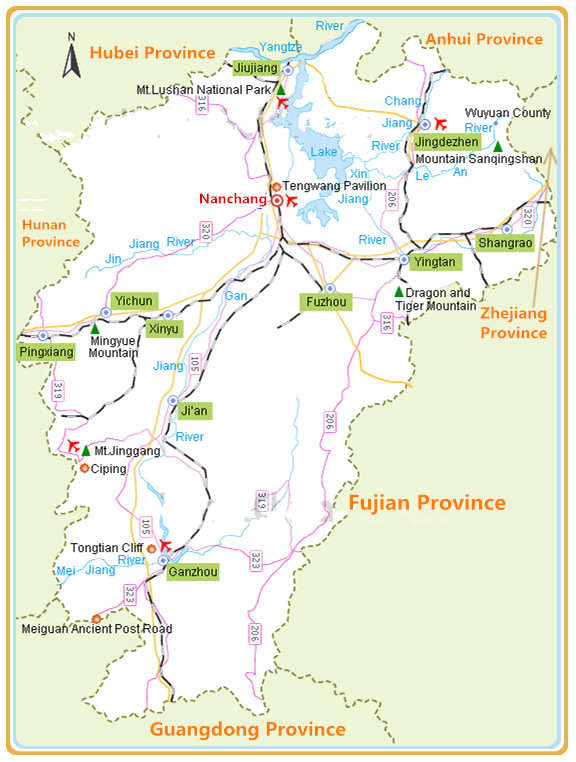 Ganzhou City, located in the south of Jiangxi Province, is bordered with Sanming and Longyan in Fujian Province, Fuzhou and Ji'an in Jiangxi Province. It also shares boundary with Guangdong Province in the south and Hunan Province in the west. Ganzhou is famous for Ruijin, Tongtianyan Grottoes and the Ancient City Wall, so it is an important tourism city in Jiangxi Province.
Ganzhou City, located in the south of Jiangxi Province, is bordered with Sanming and Longyan in Fujian Province, Fuzhou and Ji'an in Jiangxi Province. It also shares boundary with Guangdong Province in the south and Hunan Province in the west. Ganzhou is famous for Ruijin, Tongtianyan Grottoes and the Ancient City Wall, so it is an important tourism city in Jiangxi Province.
Facts of Ganzhou
Chinese Name: 赣州市 (gàn zhōu shì)
Population: 8,456,900
Area: 39,380 square kilometers (15,205 square miles)
Nationalities: Han
Administrative Division: 1 district (Zhanggong); 15 counties (Ganxian, Xinfeng, Dayu, Ningdu, Yudu, Xunwu, Anyuan, Shangyou, Chongyi, Longnan, Quannan, Dingnan, Xingguo, Huichang, Shicheng); 2 county-level cities (Ruijin, Nankang).
History of Ganzhou
Human settlers moved to this region four or five thousand years ago. Before the Qin Dynasty (221BC-206BC) put it under the administration of Jiujiang Shire, Ganzhou was a part of the Chu Kingdom in the Warring States Period (476BC-221BC).
In 201, Emperor Gaozu of the Han Dynasty established a county in the territory of modern Ganzhou. In those early years, ethnic Han settlement and authority in the area was minimal and largely restricted to the Gan River basin. The river, a tributary of the Yangtze River via Poyang Lake, provided a route of communication from the north as well as irrigation for rice farming.
By the Three Kingdoms Period (220-280), a city-level administrative apparatus had been established, which is said to be the initiation of city-level governing bodies in southern Jiangxi.
During the Sui Dynasty the county administration was promoted to prefecture status and the area called Qianzhou (虔州). During the Song Dynasty immigration from the north bolstered the local population and drove local aboriginal tribes further into the hills. Especially after the fall of the Northern Song capital of Kaifeng, migrants increased dramatically. The name was officially changed to Ganzhou in the Southern Song.
During the late 1800's Ganzhou was opened as one of the southern treaty ports and became a minor base for foreign companies. Between 1929 and 1934, Ganzhou formed a part of the Jiangxi Soviet, one of the bases of the Communist Party of China. Due to its proximity to the Red capital Ruijin (瑞金), Ganzhou was subject to a number of Kuomintang encirclement campaigns.
What to see in Ganzhou?
Mountains and hills are the predominant types of landform of Ganzhou City, covering a percentage of eighty of the city's territory. Surrounded by mountains, the area is higher in the circumference and lower in the central part which is made up of hills and river valleys.The city of Ganzhou sits where the Gòng Shuǐ (贡水) and Zhāng Shuǐ (章水) come together to form the Gàn Jiāng (赣江). This strategic location has been used as a port connecting southern and central China since way back in the day.
Ganzhou receives a small number of domestic tourists each year. Although it is encircled by mountain scenery, it is largely overshadowed by more famous attractions in Jiangxi, such as Lushan and Jingdezhen among others. Some of the places of interest in Ganzhou include:
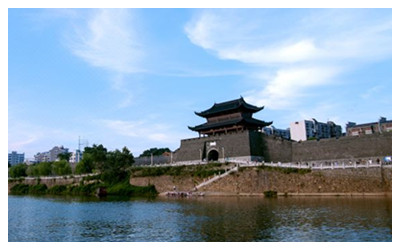 |
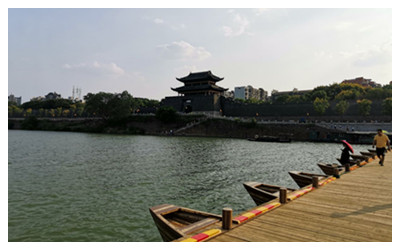 |
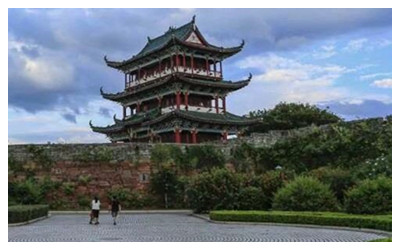 |
| Ganzhou Ancient City Wall | Ganzhou Ancient Pontoon Bridge | Eight Sightseeings Tower |
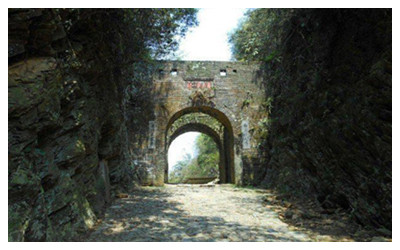 |
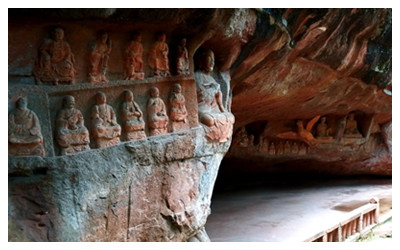 |
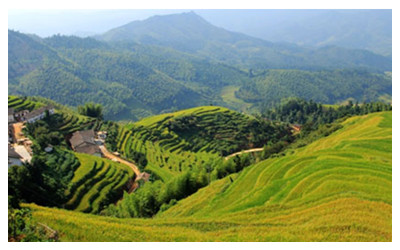 |
| Meiguan Ancient Post Road | Tongtianyan Scenic Area | Shangbao Terraced Fields |
When to visit Ganzhou?
Enjoying a subtropical humid monsoon climate, the city has abundant rainfall. Intense precipitation usually begins in May. Boiling days in summer and chilly days in winter are relatively fewer. The annual average temperature is about 19 C (66
C (66 F). The best time to visit Ganzhou is in spring and autaumn.
F). The best time to visit Ganzhou is in spring and autaumn.
How to reach Ganzhou ?
By Air: Ganzhou Huangjin Airport is seated in the south outskirt of the city, only 4 kilometers (2.5 miles) from the city proper. At present, it has opened flights to Guangzhou, Beijing, Jingdezhen, Nanchang, Chongqing, Nanjing and Shanghai. The new airport is under construction in the Nankang City and it is expected to be accomplished at the end of 2007.
By Train: Completed railway lines including Line Beijing-Jiulong (a city in Hongkong), Ganzhou-Longyan (a city in Fujian). Line Ganzhou-Shaoguan, and Ganzhou-Longyan is under construction.
By Bus: The transportation of inner highway has generated into a new prospective. Centered the urban zones, National highways including No.105, No.323, No. 319, No.206 are connecting every direction of the city. Besides, Line Ganzhou-Heyuan, G76 Xiamen-Chengdu, Ganzhou-Shaoguan, G35 Daqing-Guangzhou, Line Ganzhou-Daqing and other highways are facilitating the convenience of tourism.
Ganzhou Bus Station lies in No.25, 814 Dadao, Zhanggong District, dispatching 600 buses a day. Here list some express bus routes from Ganzhou.
By Water: The Port of Ganzhou, located in the headstream of Ganjiang, is one of the six ports within the city, which harbor is distributed to Gong River, Zhang River as well as the confluence of Gan River. The port sections occupied an area of over 500,000 square meters, with water covering of 4,670,000 square meters.
Ganzhou Travel Tips
Special Local Products: southern poplar mushroom, konjak, orange, tea, red melon seed.
Local Foods: Jiangxi Cuisine is dominated by domestic livestock and wild vegetable, in lack of seafood. Following dishes are among our recommendation: Gannan stewed fish, steamed pork with lotus leaf package, steamed pork ribs with taro, Ganzhou fried sweet rice with sesame, steamed fish with ground glutinous rice, Xinfeng Jiaozi with carrot filling, rice noodles with vegetables and meat.
Local Events: Caicha Opera(采茶戏)- As the southern region of Jiangxi is productive in tea, the Tea Fair is an imperative folk custom of that region, which combines songs and dance together. The language of Caicha Opera adapts the dialect of Hakka, and the opera is characterized by oral language, folk dance and colorful lanterns, which is abundant in ethnic feature. The theme of which is mainly focusing on the life of lower class including workers, craft men and so forth.
Useful Telephone Numbers:
Tourist Complaints: 0797-8391554
Tourist Inquiries: 0797-8391553
Weather Forecast: 121
Zip Code Inquiry: 184
Bank of China Ganzhou Branch: No.72, Wenqing Road, Zhanggong District
China Post Ganzhou Branch: No.39, Wenqing Road, Zhanggong District







 Ask Questions ?
Ask Questions ?